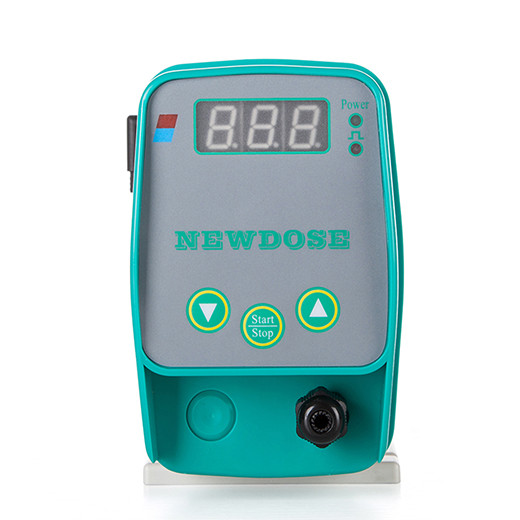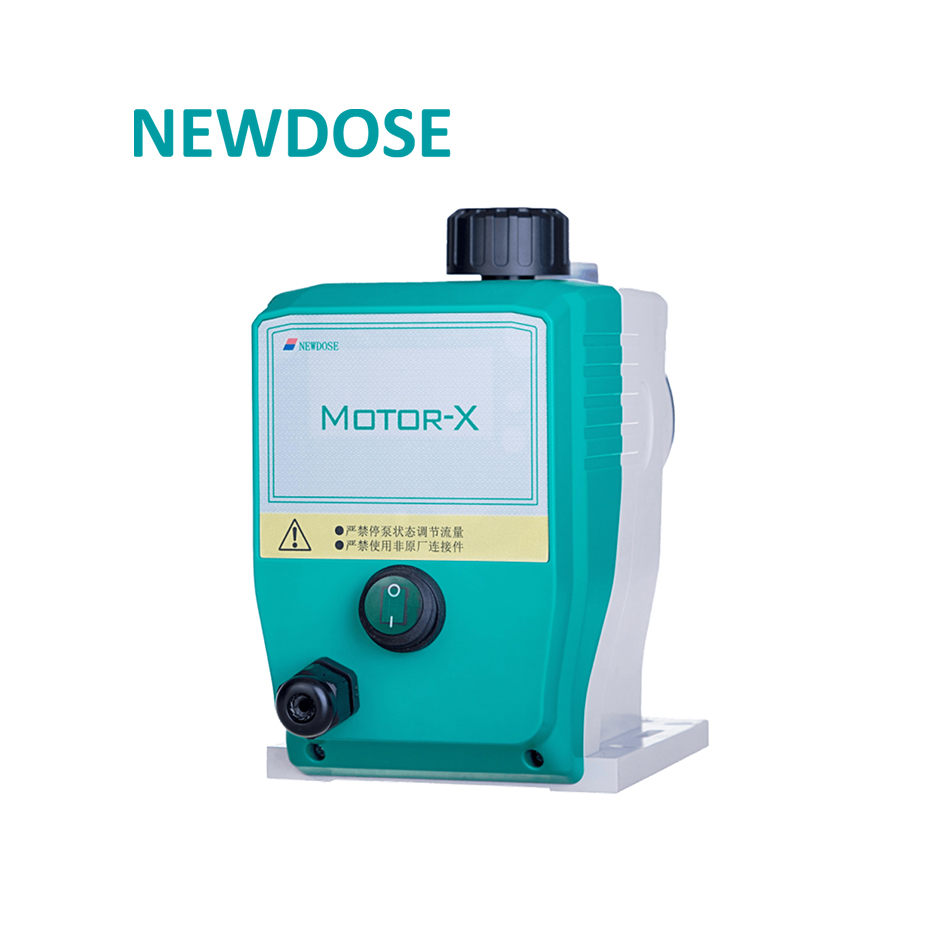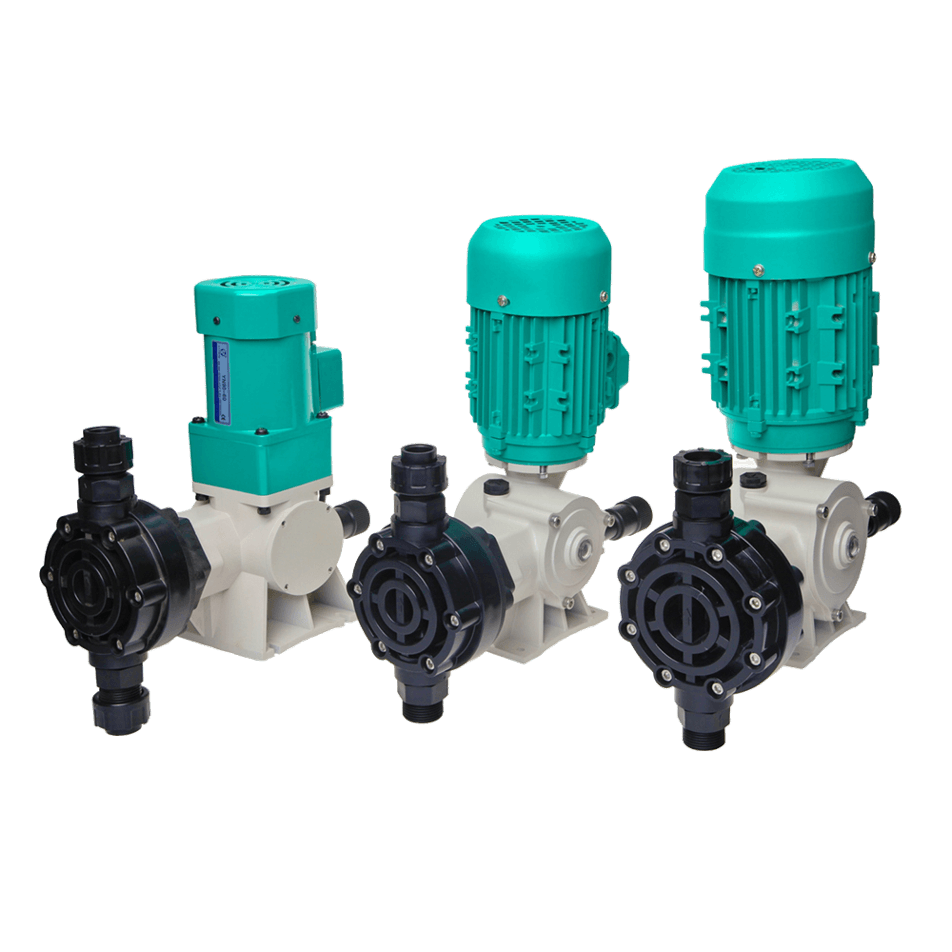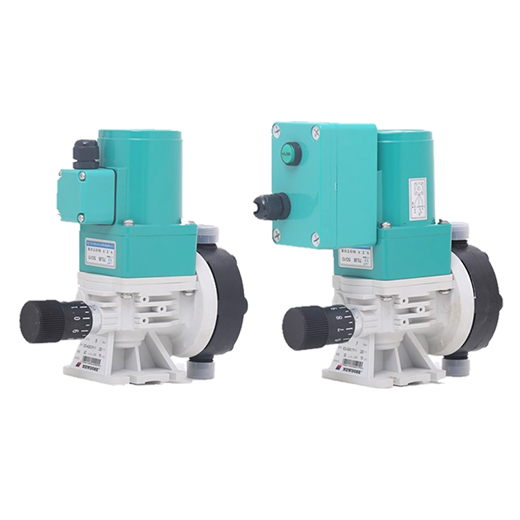The mechanical metering pump is a motor that drives a worm gear pair to make a variable speed movement through a direct drive. Under the action of a crank connecting rod mechanism, the rotary motion is converted into a reciprocating linear motion. The so-called diaphragm metering pump uses a specially designed and processed flexible diaphragm to replace the traditional piston, and realizes reciprocating motion under the action of the driving mechanism, thereby completing the suction to discharge process. Due to the isolation effect of the diaphragm, the isolation between the metered fluid and the driving lubrication mechanism is truly realized in structure. Since its diaphragm bears the pressure on the medium side, the maximum discharge pressure of a mechanical diaphragm pump generally does not exceed 1.2MPa.
1. Use the front and back movements of the diaphragm to change the diaphragm and the pump head to cause the ball valve to move up and down to form vacuum adsorption and push to achieve the purpose of liquid transportation.
① When the diaphragm is pulled back, the outlet ball valve falls down and tightly fits the ball seat. The inlet ball valve floats upward due to the vacuum generated between the diaphragm and the pump head when the diaphragm is pulled back, and the liquid is sucked up.
②When the diaphragm is pushed forward, the inlet ball valve is airtight with the ball seat to prevent liquid from passing through, and the outlet is pushed forward by the diaphragm to open the ball valve and the liquid is discharged.
2. Through the above action principle, it can simply know that any factor of the pump head, diaphragm, and ball seat of the metering pump cannot reach the delivery target or the flow rate is abnormal. The usual faults are that
①the ball seat and ball valve cannot be airtight
②the entrance and exit are blocked by foreign matter
③diaphragm damage.
Therefore, when the liquid is conveyed abnormally, the problem should be solved in this direction, and the factors that cause the above situation are too numerous to list, depending on the piping, fittings and operating conditions at the time.
Features Of Mechanical Diaphragm Metering Pump
(1) Lower price;
(2) No dynamic seal and no leakage;
(3) It can transport high-viscosity media, abrasive slurries and hazardous chemicals;
(4) The diaphragm bears high stress and the diaphragm life is relatively low;
(5) The outlet pressure is below 3MPa, and the measurement accuracy is ±2%;
(6) No safety relief device.
How To Install A Mechanical Diaphragm Metering Pump?
The mechanical diaphragm metering pump is supported by a solid, anti-vibration foundation. The foundation is higher than the ground, one side of which is washed by water, and is also easy to repair. Enough space around the mechanical diaphragm metering pump is reserved to facilitate pump maintenance and adjustment.
There are mounting holes at the bottom of the mechanical diaphragm metering pump for mounting anchor bolts.
The mechanical diaphragm metering pump installed outdoors should be covered by a canopy.
 English
English  Español
Español  한국어
한국어  français
français  Deutsch
Deutsch  русский
русский  português
português  العربية
العربية  tiếng việt
tiếng việt  Türkçe
Türkçe  ไทย
ไทย 












